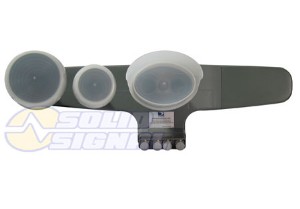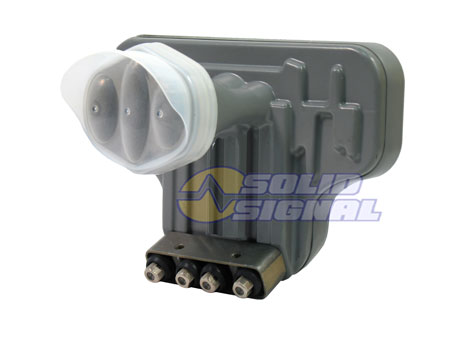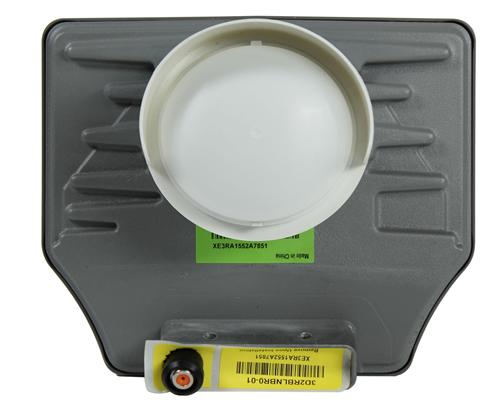Here’s what’s great about DIRECTV satellite: you can use it your way. DIRECTV offers flexibility that you won’t find in other pay-TV providers, while keeping what makes pay TV great. Other traditional pay-TV companies are trying to move to a 100% internet-based system. Of course they are, it’s the 2020s. But that ignores a few big problems that still exist today. What if you’re somewhere without internet? These places exist. What if your internet plan has data caps? If you’re an RV or mobile user with that new satellite internet, you have data caps. You can run out of data in under a week if you watch a lot of videos.
That’s why people have stayed with DIRECTV and that’s why people are coming back to DIRECTV. But this isn’t a commercial — this is a tutorial. Let’s talk about one specific problem and what you need to do to fix it.
A few weeks ago, a customer contacted us and told us that they had two DIRECTV receivers and they didn’t behave the same. One got “771” signal loss errors on channels that the other didn’t. It took a while to get to the bottom of the issue, and it wasn’t what we expected.
The customer finally, sheepishly, came clean and said that one receiver was connected to the older roof-mounted dish on their RV, while one was connected to their home’s satellite dish which was a little newer. They didn’t say this originally because they thought what they were doing was illegal. So let’s talk about that for a minute.
Your satellite system won’t know if you use two satellite dishes. Of course you won’t be able to share programming between dishes. In other words, you can’t put a Genie DVR off one dish and the client box off the other. But if you’re trying to put a receiver in a guest house for example, it’s a lot easier to put up a second dish than to run cable from the main house.
If you only have one DIRECTV account, it has to be used at one location at a time. If you have two homes, you can have two accounts and suspend one at a time. Or, you can make sure that the home system is disconnected and powered down when you’re somewhere else. If you’re taking the RV out on the road and you want to bring a receiver with you, that’s fine as long as you power down the equipment you have, unplug it from power and internet. When you bring it back, you may need to refresh your receiver but that’s easy.
Bottom line: there’s nothing wrong with using a satellite receiver in your RV if it’s in the driveway. That’s your property. But take that RV on the road, and you have to make sure you’re not using DIRECTV service at home.
All satellite dishes aren’t built the same. A satellite dish may look the same as another one but still be different. That’s the problem this customer had. When they took the receiver from one place to the other, it didn’t know it was connected to a different kind of dish. This meant everything was confused, and some channels dropped out.
The easy way to make sure this doesn’t happen is to call the folks at Solid Signal. We can help you identify what you have now, and help you choose the right thing to buy. If you already have two dishes and you’re running into this kind of issue, there’s a step you’ll need to take every time you move the receiver.
You’ll just need to run the Satellite Setup every time you move. It’s not that hard and there’s a tutorial (with video) here. The tutorial is for older, non-Genie receivers because newer hardware will automatically sense a change in the dish and you won’t have the problem.
It’s easy to tell an SL3 dish from an SL5. SL5 dishes have a big wide front part that looks something like this:

SL3 dishes have a front part that’s much smaller and only has one big white piece in the middle. While there’s some variation in the way SL3 dishes look they always have a smaller front part with one white piece.

It may look like the picture above, or it may look more like the picture below.

This is something that should be set automatically. However if it’s not, you need to look at the number of wires coming out of the dish. If there’s more than one wire (or space for more than wire to connect, choose “Multiswitch.” If there’s only one wire, it should be sensed automatically and will likely either be “SWM Module 8ch” or “SWM Module 22ch” or something similar.
A lot of times you won’t know if you have an “RB” dish. If your home or RV dish is oval-shaped and it’s newer than about 2020, it’s almost always “RB.” If the dish is older than about 2017, it’s definitely not “RB.” The reverse band dishes (that’s what RB stands for) came out in 2017 and weren’t really standard for a couple of years.
If you don’t know what you have, you can simply try one option and, if you get 771 errors on some channels, try the other option. It’s not going to damage the receiver to do this.
This customer found that they had an “RB” dish on their home and a “non-RB” dish on their RV and by changing that setting the problem went away.
If you’re still having problems with your RV system, you’ll want to work with the experts. Signal Connect has over 20 years of experience with customers who have RVs. Why talk to anyone else? Call us at 888-233-7563 or, if it’s after hours, fill out the form below.
The post Weird DIRECTV problems if you take your receiver from dish to dish? Here’s what you need to know appeared first on The Solid Signal Blog.
Continue reading...
That’s why people have stayed with DIRECTV and that’s why people are coming back to DIRECTV. But this isn’t a commercial — this is a tutorial. Let’s talk about one specific problem and what you need to do to fix it.
The inspiration for this article
A few weeks ago, a customer contacted us and told us that they had two DIRECTV receivers and they didn’t behave the same. One got “771” signal loss errors on channels that the other didn’t. It took a while to get to the bottom of the issue, and it wasn’t what we expected.
The customer finally, sheepishly, came clean and said that one receiver was connected to the older roof-mounted dish on their RV, while one was connected to their home’s satellite dish which was a little newer. They didn’t say this originally because they thought what they were doing was illegal. So let’s talk about that for a minute.
It’s not illegal to use two dishes at the same time…
Your satellite system won’t know if you use two satellite dishes. Of course you won’t be able to share programming between dishes. In other words, you can’t put a Genie DVR off one dish and the client box off the other. But if you’re trying to put a receiver in a guest house for example, it’s a lot easier to put up a second dish than to run cable from the main house.
…but you can’t use the dishes in two locations.
If you only have one DIRECTV account, it has to be used at one location at a time. If you have two homes, you can have two accounts and suspend one at a time. Or, you can make sure that the home system is disconnected and powered down when you’re somewhere else. If you’re taking the RV out on the road and you want to bring a receiver with you, that’s fine as long as you power down the equipment you have, unplug it from power and internet. When you bring it back, you may need to refresh your receiver but that’s easy.
Bottom line: there’s nothing wrong with using a satellite receiver in your RV if it’s in the driveway. That’s your property. But take that RV on the road, and you have to make sure you’re not using DIRECTV service at home.
The problem that people have with moving receivers
All satellite dishes aren’t built the same. A satellite dish may look the same as another one but still be different. That’s the problem this customer had. When they took the receiver from one place to the other, it didn’t know it was connected to a different kind of dish. This meant everything was confused, and some channels dropped out.
The easy way to make sure this doesn’t happen is to call the folks at Solid Signal. We can help you identify what you have now, and help you choose the right thing to buy. If you already have two dishes and you’re running into this kind of issue, there’s a step you’ll need to take every time you move the receiver.
You’ll just need to run the Satellite Setup every time you move. It’s not that hard and there’s a tutorial (with video) here. The tutorial is for older, non-Genie receivers because newer hardware will automatically sense a change in the dish and you won’t have the problem.
SL3 or SL5?
It’s easy to tell an SL3 dish from an SL5. SL5 dishes have a big wide front part that looks something like this:

SL3 dishes have a front part that’s much smaller and only has one big white piece in the middle. While there’s some variation in the way SL3 dishes look they always have a smaller front part with one white piece.

It may look like the picture above, or it may look more like the picture below.

Multiswitch type?
This is something that should be set automatically. However if it’s not, you need to look at the number of wires coming out of the dish. If there’s more than one wire (or space for more than wire to connect, choose “Multiswitch.” If there’s only one wire, it should be sensed automatically and will likely either be “SWM Module 8ch” or “SWM Module 22ch” or something similar.
RB or not RB, that is the question
A lot of times you won’t know if you have an “RB” dish. If your home or RV dish is oval-shaped and it’s newer than about 2020, it’s almost always “RB.” If the dish is older than about 2017, it’s definitely not “RB.” The reverse band dishes (that’s what RB stands for) came out in 2017 and weren’t really standard for a couple of years.
If you don’t know what you have, you can simply try one option and, if you get 771 errors on some channels, try the other option. It’s not going to damage the receiver to do this.
This customer found that they had an “RB” dish on their home and a “non-RB” dish on their RV and by changing that setting the problem went away.
Questions?
If you’re still having problems with your RV system, you’ll want to work with the experts. Signal Connect has over 20 years of experience with customers who have RVs. Why talk to anyone else? Call us at 888-233-7563 or, if it’s after hours, fill out the form below.
The post Weird DIRECTV problems if you take your receiver from dish to dish? Here’s what you need to know appeared first on The Solid Signal Blog.
Continue reading...

